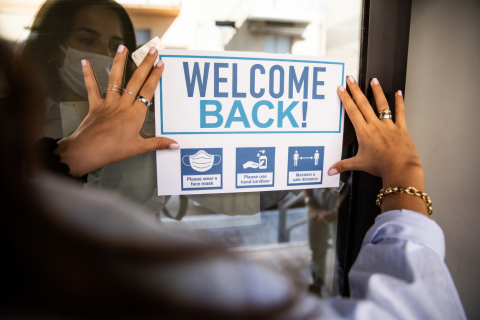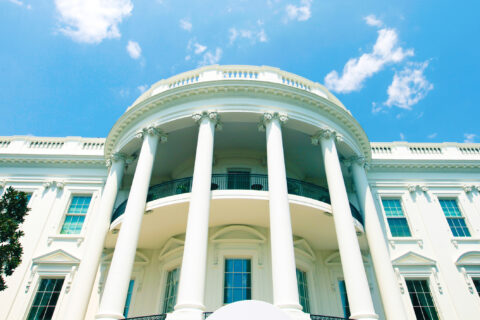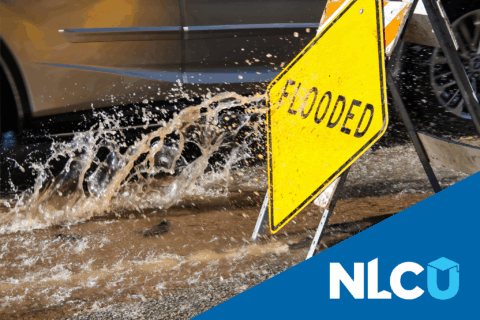The City of Cincinnati continues to showcase its leadership in both emissions reductions and climate adaptation through a variety of efforts. It committed to achieving 100 percent renewable energy by 2035 and recently passed legislation to fund new transit measures. Cincinnati residents face growing challenges, however, from both extreme heat and increased precipitation. These health, economic and climate consequences are unfortunately far more pronounced for Black, Indigenous and other people of color. As we have seen in other cities across the country, it is often the municipal sustainability teams that lead the charge to address inequities both within communities and even internally, among city departments. Cincinnati’s sustainability team understood that in order to mitigate climate impacts, especially for residents who are most at risk, it must integrate equity into its practices and policies.
The sustainability team outlined a citywide goal to operationalize sustainability and resilience strategies that foster more equitable and inclusive programs and practices. The team wove these ideals into a 2018 Green Cincinnati Plan that aimed to establish Cincinnati as a national leader in sustainability, as well as an attractive destination for businesses and individuals. NLC selected Cincinnati to participate in the 2020 Leadership in Community Resilience (LCR) cohort for its outstanding progress and four proposed goals:
- Deepen existing relationships and form new partnerships with environmental groups to create a sustainability-focused equity playbook and implement the Green Cincinnati Plan.
- Operationalize the equity playbook to incorporate equity into sustainability and resilience programs.
- Expand sustainability and equitable resilience city- and department-wide.
- Advocate for sustainability and resilience overall among staff, elected leaders, community leaders, and other stakeholders.
The sustainability team prioritized community collaboration to realize these goals and entered a partnership with Groundwork Ohio River Valley (Groundwork ORV), a Cincinnati-based environmental justice non-profit, and Green Umbrella, a regional sustainability alliance with hundreds of member organizations based in the Greater Cincinnati area.
The COVID-19 pandemic presented numerous challenges that tested the city’s resilience and underscored the fact that some communities are well-prepared for crisis, while some are more vulnerable. The team focused its efforts on improving its understanding of those vulnerabilities in Cincinnati.
The momentum of the work benefited from three additional grants:
Climate Safe Neighborhoods
Groundwork ORV received a Climate Safe Neighborhoods (CSN) grant to work with at-risk communities to develop mitigation measures for extreme heat, flooding and air pollution. Recognizing the lasting environmental and socio-economic impacts of historic segregation policies like redlining and urban renewal, the team did a deep dive with community members of the Lower Price Hill neighborhood to understand what environmental and climate disruptions looked like from residents’ perspective. A series of six meetings were held with a team of residents who were paid for their expertise as community members. Throughout the meetings, the team produced the region’s first neighborhood-level resiliency plan.
Heat Risk Mapping
With the support of NLC’s LCR program, Cincinnati was selected to participate in the NOAA/NIHHIS heat island mapping program. This grant provided the team with equipment to measure the urban heat island effect across town. Recruited resident volunteers collected over 10,000 data points that were aggregated and synthesized into a heat map. The data showed a 9°F temperature difference when comparing locations across the city. The map highlighted heat burden and critical evidence to emphasize the need for cooling strategies, such as tree planting, public pools and cooling stations.
Climate Equity Indicators
Cities have limited funding and resources, and the climate crisis has an ever-growing price tag. Cities need data to help target resources where they are needed most. This makes it possible to design better policies and programs that address the needs of vulnerable community members. Data, nonetheless, often comes aggregated at the city level, creating challenges to strategically deploy programs. With a grant from Kapwa Consulting, the city’s sustainability team engaged the University of Cincinnati in synthesizing its community engagement work into the city’s first Climate Equity Indicators Report. This collection of neighborhood-level climate vulnerability data will be foundational to future climate resilience planning and program development.
Recommendations for Local Leaders
The Cincinnati sustainability team’s work exemplified how partnerships between city government, community-based organizations and residents can enhance program development, engagement and outcomes. Learning from Cincinnati’s experience with the LCR program, here are four ways local leaders can prioritize equity in their city plans:
1. Partner with Local Organizations that have Deep Roots in the Community:
This effort was a partnership among several organizations, but it all hinged on fostering relationships with organizations that had deep relationships in the community. These organizations served in diplomatic roles to connect residents with partner organizations and government agencies. These bridge-builders were essential for establishing rapport and trust, but also critical for managing the logistics of sharing meeting information with residents and assisting community members to participate in virtual meetings.
2. Community Members are Experts:
City leaders often seek climate professionals as subject matter experts for climate resiliency planning. For community resilience planning, however, residents serve as the experts on life in their neighborhoods and should receive compensation accordingly. This practice helps rebuild trust between local governments and under-resourced communities that have been historically left out of planning processes.
3. Establish Equitable Processes Instead of Only Equitable Outcomes:
City governments often measure distributional equity, or how resources are spread across communities. They often focus on “the deliverable” of a project. The process is the product in this example. The team learned to critically think about procedural equity, particularly for co-creating programs and policies with the community. The Climate Safe Neighborhoods is a deep dive into procedural equity that other city departments can now use as a model.
4. Strategic Scaling:
Cincinnati contains 52 neighborhoods. The sustainability team spent a lot of time embedded in one neighborhood. The city’s time commitment helped ensure that there was adequate engagement across the city.
NLC would like to acknowledge Oliver Kroner, Sustainability Manager at the City of Cincinnati, for his contributions to this article.
Become an NLC Member
Interested in more news like this? Join NLC and get access to timely resources, proven best practices, and connections to peer networks.







